Is It Time to Make the Switch?
The Software as a Service (SaaS) market has evolved considerably since Salesforce launched its customer relationship management (CRM) platform in 1999. An industry that began with start-ups recognizing the benefits of creating applications in the cloud has grown into a $145 billion powerhouse with strong adoption among leading enterprises.
It’s not tough to see why either. Apart from the benefit of recurring revenue, organizations of all sizes are using the SaaS platform to launch software products with lower operational costs, rapid deployments, flexible configurations, seamless integrations, and higher availability compared to on-premises software solutions.
However, with a subscription-based platform, the SaaS business model differs significantly from traditional software licensing models. Companies entering the market must consider the unique challenges concerning product and pricing, sales and marketing, research and development, service and support, and finance.
For all companies, the SaaS journey must be navigated carefully. SaaS businesses require a vastly different management and technical approach, as well as a fundamental shift in strategic and operational mindset. While tremendous opportunities exist when utilizing the SaaS business model to gain a competitive advantage, the transformation experience is unique to every business. Long-term success depends greatly on seamless execution.
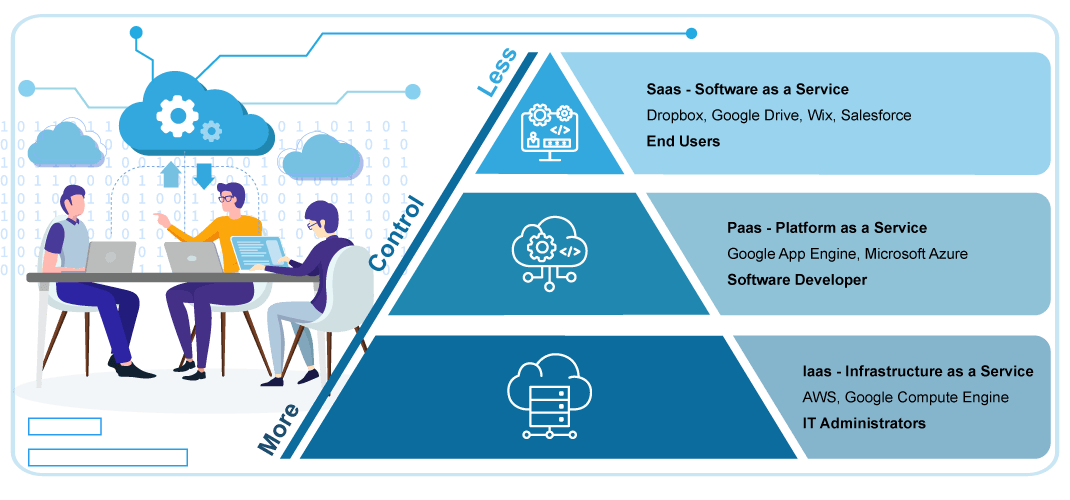
What is the SaaS Business Model?
The SaaS business model is a subscription-based service model where software is licensed to users with a monthly or yearly fee. The software is hosted in a central cloud location and made available on the internet via a mobile or desktop application.
With a SaaS business model, the cloud vendor hosts and maintains the servers, code infrastructure, and databases. Whereas with on-premise software, the business is responsible for maintaining server hardware and software, data backups, storage, and disaster recovery.
Cloud product hosting and deployment offers several key benefits including:
- A level of scalability and agility that is difficult or impossible to match with on-premises solutions.
- Removes geographical limitations and allows you to expand your operations globally.
- Accelerated software development lifecycles by up to 33%.
- More predictable cash flow when shifting from a CapEx model to an OpEx (operational expenditure) model.

6 Key Considerations Before Transitioning to the SaaS Business Model
While the SaaS is now the industry norm for application development, companies must ask several key considerations before launching a product or making the switch. The transition involves a delicate balancing act to ensure existing revenue streams co-exist and support the SaaS business model.
1. Can you manage SaaS migration and deployment?
It is essential to understand that in the process of migrating an enterprise application to a SaaS service as it essentially becomes a product. Like any product, it must be effectively managed and supported. This means roadmaps, marketing, support, etc. If this will not be possible for you to manage, you may need to rethink the transition.
2. Are you application-ready for SaaS transformation?
Applications and related services designed for internal use are not usually built to run on SaaS solutions and may be less complete and robust than a client-facing application. Depending on the current state of your application, you may need to invest significant time and effort in refactoring the application and its resources. In the worst case, significant portions of the application and its supporting resources may need to be restructured or rewritten.
3. Are you ready to run multiple users and multiple instances?
An application designed for internal use is often built to support many users, but rarely to support many instances. While in its current state, it is sufficient to run one instance of the application and its resources with all the users connecting to that instance. SaaS deployment will require your application to be able to run multiple instances, each with its own space and resources.
This often requires a new way of thinking about the application in order to keep each instance virtually distinct and separate while allowing them to access hardware resources simultaneously.
4. What are the security requirements for your SaaS product?
The security of your application and its data is a crucial concern as cloud deployment opens it up to new vulnerabilities. You will need to make sure that you have taken all the necessary measures to keep your sensitive and critical data safe from malicious third parties, catastrophic data loss, and system failure, in addition to service outages.
5. Will you be able to adhere to regulatory compliance?
As SaaS migration removes an enterprise application’s geographical limitations and allows its use to expand globally, your application may become subject to different legislation, regulations, and industry standards. A notable example is the European General Data Protection Regulation (GDPR) adopted in 2018. You may need to invest significant time in ensuring that you comply with all relevant regulations and standards pertaining to your application’s functionalities.
6. Have you considered the operational costs for SaaS deployment?
SaaS-deployed applications will likely run on public cloud IaaS services. Your operations cost projections need to consider the cost of these IaaS services. You will also need to account for the personnel needed to effectively operate the application and provide user support and service.
SaaS Organizational Structure
Maybe you already have a firm understanding of compliance and security, and are application-ready to transition to a SaaS business model. But do you have the organizational structure in place to launch a product successfully?
Your organizational structure will depend on the size of your SaaS company. The more employees in your organization, the more the structure changes. As a result, the most effective organizational structure will be highly dependent on the number of employees and resources at your disposal.
Microenterprise Structure
With a company of five to ten employees, the founder will be the highest executive and is typically responsible for sales, marketing, and, when required, seeking venture capital.
The co-founders or high-level managers will make up the rest of the company executives. The first level will be responsible for the product and technology, while the second level will handle the administration, operations, and processes.
The employees reporting to each of the co-founders or managers should have clearly defined roles in a vertical organizational structure.
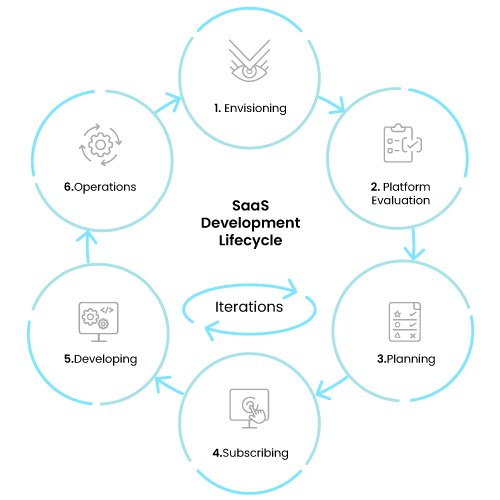
Small Enterprise Structure
Once a SaaS business receives the funding and expands to 25 to 50 employees, its organizational structure will be slightly different. But the employees will typically still fit into the three categories:
- Administration and processes
- Sales and marketing
- Product and technology
When companies reach this size, co-founders can concentrate more on setting timelines and milestones while sales managers, product development managers, and marketing managers can navigate lower-level employees through the SaaS development lifecycle (SaaSDLC).
Medium-Sized Enterprise Structure
Once your SaaS company reaches the level of a medium-sized enterprise, C-suite executives such as the CFO, COO, CMO, CIO, and CTO should be hired or promoted accordingly.
Underneath C-level executives, the Vice Presidents will head various departments, including sales, marketing, finance, product development, HR, accounting, etc.
At this stage, the CEO will primarily be responsible for:
- Providing vision and direction
- Developing a high-level strategy and setting long-term goals
- Communicating with the public, investors, shareholders, and partners
- Maintaining social responsibility
- Establishing internal policies
- Assessing and preventing potential risks to the company
- Seeking out opportunities for growth and expansion
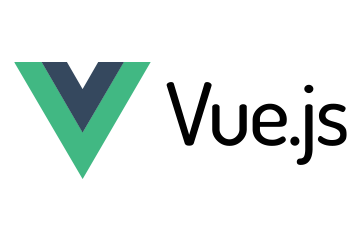
Vue
Vue.js is quickly becoming one of the most popular progressive frameworks on the market. It is user and developer-friendly, has a ton of useful libraries, a large open-source community, and a great toolset. Companies like GitLab, NBC, and Nintendo utilize Vue as their front-end programming language. Since Vue is a relatively new JavaScript framework, it has learned from the faults of its familiar predecessors, React and Angular. This makes it relatively easy to work with as developers are familiar with the language, which reduces the burden of hiring new recruits.
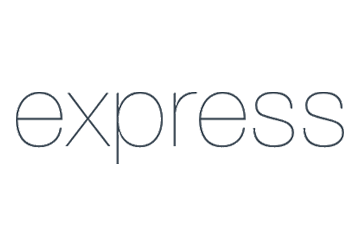
Express
Express.js is a back-end web application framework for the Node.js platform. Express is a component of the MEAN development stack, which stands for MongoDB, Express, Angular, and Node.js. Because all components of the MEAN stack are written in JavaScript, MEAN applications can be written entirely in JS for both server-side and client-side execution environments.
Companies using Express.js for their web applications and APIs include Fox Sports, IBM, Uber, and PayPal.
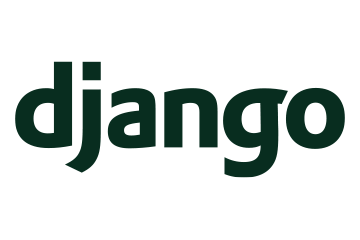
Django
Django is a widely-used Python-based web development framework that follows the Model-View-Template (MTV) framework. It’s fast and simple and uses the principles of rapid development, which means developers can create more than one iteration at a time. It also follows the Don’t Repeat Yourself (DRY), which means developers can reuse existing code and avoid redundancy by replacing it with abstractions or data normalization.
Perhaps most notably about the Django framework is it has one of the best out-of-the-box security systems on the market. Django promptly releases new security patches and is usually the first to respond to vulnerabilities and alert other frameworks to security risks. This makes it the go-to choice for major companies like Google, Instagram, and Youtube.
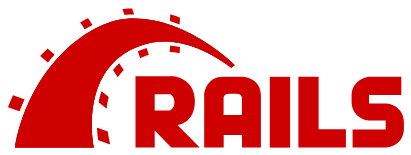
Ruby on Rails
The first web application was written on Ruby on Rails and it is still widely used to create dynamic, reliable, and scalable apps. “Rails” is another web development framework that follows the Model-View-Template (MTV) architecture.
The principle difference between Ruby on Rails and other frameworks lies in its simplicity, speed, and ease of use that seasoned developers enjoy working with. One of the key advantages of Ruby on Rails is that changes made to applications are immediately applied, avoiding the time-consuming steps normally associated with SAAS products.
Other popular frameworks include:
- Catalyst in Perl
- Laravel in PHP
- CakePHP in PHP
- Yii in PHP
- Flask in Python
- Grails in Groovy
- Phoenix in Elixir
- Play in Scala
- Sails.js in Node.js
Six SaaS Operational Transformation Priorities to Consider
The unique nature of the SaaS business model requires a renewed focus on key operational areas. This is especially true for existing product and software companies entering the SaaS market. To ensure a smooth transition, here are six priority areas to consider in your SaaS paradigm shift.
1. Product Validation
Before developing your MVP, you must validate how many customers will actually pay money for your product. Using surveys, doing competitive analysis, having in-person conversations with your target audience, and developing landing pages are viable options to see if a market exists for your product.
2. Pricing Models
It is important to study competitors for patterns and take relevant inputs. Be sure not to imitate or simply offer a lower price. Like any pricing plan, a SaaS product should be quantified by the value your customers receive from the product.
A good place to start for new entrants is using “Freemium,” “Proof of Concept,” and “Try and Buy” models to test the market and get a foothold in your industry. This will help to gauge your customer base and decide whether to introduce a flat-rate, fixed-rate, tiered, or usage-based pricing plan.
3. Customer Segmentation
Customer segmentation in the SaaS market can either be trait-based, needs-based, or value-based. By combining these elements, you can get a complete picture of your groups to help improve customer experience through implementing bespoke product experiences. These actions will bring customers closer to realizing your product’s value and increase retention rates.
4. Customer Support
Customer satisfaction is a critical success factor for your Saas product. The SaaS business model’s success is driven by rapid growth, service velocity, bottom line, and customer retention. By implementing a “customer-first” culture, organizations can create superior customer service that could be the differentiator between you and the competition.
5. Financial Operations
The key to successfully managing the finances of a SaaS business is using SaaS-specific automation technology. Automated accounting tools can eliminate manually entering data by automating contract, subscription, revenue, and invoice schedule. The technology will also provide the benchmarks and metrics to help finance teams with operational decisions, streamline audits, and identify financial opportunities to scale the business.
6. Sales Operations
CRM built for Saas is a critical requirement for sales teams to scale your business. The right CRM solution can give you a unified view of funnel metrics, growth/velocity metrics, sales force productivity metrics, cost, churn, and cash flow. It also adds the benefits of building stronger client relationships, improving customer retention, identifying gaps in your sales process, and aligning your sales and marketing teams.
Six SaaS Operational Transformation Priorities to Consider
The unique nature of the SaaS business model requires a renewed focus on key operational areas. This is especially true for existing product and software companies entering the SaaS market. To ensure a smooth transition, here are six priority areas to consider in your SaaS paradigm shift.
1. CAC
Customer acquisition cost (CAC) is the total cost of resources required to acquire a new customer. It is one of the most important and challenging metrics to measure for a SaaS business.
Customer LTV Calculator
Total costs of acquiring a new customer / the number of new customers.
Before calculating CAC it is important to note several factors that influence its calculation:
CAC should only account for the costs required for acquiring new customers.
CAC should never be a measurement of sales and marketing alone.
A separate calculation must be made for the average number of customers acquired through Freemium and Proof of Concepts models.
Include sales commissions, but never the entire salaries of your sales teams. A calculation must be factored in on time spent acquiring new customers and nurturing existing ones.
2. LTV
Customer Lifetime Value (LTV) is an estimate of the average gross revenue that a customer will accrue over the life of their account with your product. It is one of the most important metrics to obtain in determining the long-term success potential of your SaaS product.
Customer LTV becomes meaningful when compared to your CAC (these two numbers should never be the same). A good rule of thumb is to keep a 3 to 1 ratio on LTV to CAC. If your customer acquisition cost (CAC) comes to $1, you should be returning $3 of customer LTV.
For example, say Company X’s average sale is $1000. The average customer pays three times a year and stays with them for two years, and the company’s profit margin is 50%.
Average sale: $1000
Number of annual transactions per customer: 3
Average Retention Period: 2 years
Profit Margin: 50%
Customer LTV Calulator
Average Sale x # of Annual transactions per Customer x Retention Period x Profit Margin
= $1000 X 3 X 2 X 0.5
= $3000
3. MRR
Since most SaaS businesses work off a monthly subscription, measuring monthly recurring revenue (MRR) is one of the easiest and most important metrics to keep track of. MRR is simply the sum of recurring revenue generated by customers for any given month.
MRR is not a measurement of profitability, only revenue. However, MRR data sources should include upgrades and downgrades, lost recurring revenue, and discounts.
For example, if your SaaS product costs $200/month, you brought on four customers that month at a discount of 10% each, your MRR would be $720/month.
5. Churn Rate
Churn rate is the percentage of customers leaving or canceling their product subscription over a given period. Churn rate can also be a measurement of the percentage of downgrades for your product or service.
It should be of no surprise that a high churn rate is one of the leading reasons 30 percent of SaaS startups fail within the second year. That is why it is vitally important to measure both monthly as well as annual churn rates. Measuring both helps businesses reveal patterns and adjust accordingly to the changing market. This can be anything to changing pricing models, demonstrating a need to push marketing efforts, adding new features, addressing new competition entering the market, and answering if customers were
No matter the reason for the churn, always seek customer feedback using surveys or by reaching out to them directly. The data from customer feedback helps to understand your churn rate so you can better allocate resources to improve the customer experience.
Churn Rate Calculator
The number of subscribers lost in a month divided by total subscribers at the start of that month times 100.
For example, if your company had 100 subscribers at the beginning of the month and lost five customers, you would divide five by 100 and multiply by 100. Your churn rate for that month was 5%.
Pro tip: A good churn rate for a B2B SAAS business is below 5%. The average churn rate is 24% for B2B companies, and 31% for B2C companies.
6. Retention rate
Measuring the retention rate of customers and MRR helps to understand the effectiveness of your product, marketing, customer service, and pricing model. It is important to note that the higher your retention rate, the lower the churn rate should be.
When customers retain, you should continue to find innovative ways to improve your product or service. When customers churn, you may need to pivot and reevaluate your offerings.
Customer Retention Rate Calculator
To calculate customer retention rate, divide your active customers that are continuing their subscriptions at the end of the month/year by the total number of active users you had at the beginning of that period.
MRR Retention Rate Calculator
To calculate the retention rate of monthly recurring revenue, divide the MRR of renewed subscriptions by the total MRR of subscriptions up for renewal.
For example, if your business had $10,000 MRR at the beginning of the month, and one customer subscribing $1000 MRR churned before the period ended, your MRR retention rate would be 90%.
If the sum of Expansion MRR is greater than the sum of Churn and Contraction MRR, you can go over 100%. For example, if you had $10,000 MRR at the beginning of the month, and lost $1000 MRR to churn but gained $2000 MRR from product upgrades, your MRR Retention Rate would be 110%, showing the product is doing well.
If you simply looked at customer retention rate alone, you may have assumed you were doing better and therefore put effort and resources toward the wrong practices. That is why it is crucial to measure both retention rates to get an accurate picture of your sales and marketing efforts.
SaaS Implementation Services from Trianz
Trianz is a leading SaaS implementation specialist that has helped hundreds of our clients to leverage the benefits of the evolving cloud software delivery industry. We have also partnered with numerous SaaS platforms such as our Implementation Consulting Partnership with Salesforce and a Premier Partnership with ServiceNow.
We offer a wide range of SaaS implementation services, including:
- Enterprise Resource Planning (ERP) – Before you implement SaaS into your IT operations, you need to prepare your infrastructure and workforce. ERP covers your IT operating model, related business processes, and architectural design to assess your preparedness for SaaS. Our experts can perform ERP for your business to help you improve infrastructure visibility and effectively plan IT budgets. ERP solutions function optimally when referencing a centralized database, also known as a single source of truth (SSOT). This central reference point will benefit reporting and planning as you have a unified overview of your network.
- Proof of Concept (PoC) – Even with months of research and internal assessment, some applications would clearly not meet business needs after implementation. The problem is that the application has already been implemented and the money has already been spent on licensing. This financial waste will end up giving your digital transformation a negative ROI, dissuading key stakeholders from greenlighting any further developments. By testing your applications before committing to a purchase, you can avoid this financial waste. Luckily, unlike traditional applications, SaaS has a low entry cost that allows enterprises to test applications and determine whether they are suitable without requiring a massive upfront investment.
- SaaS integration – The most significant benefit of SaaS is also its biggest drawback. SaaS models allow you to quickly provision applications without spending time on development and configuration.
Experience the Trianz Difference
Working with a SaaS development firm such as Trianz can help you throughout every stage of the SDLC. Leveraging our decades of experience providing cloud migration services to facilitate meaningful digital migrations, you can forego infrastructure management or the configuration and distribution of device-native applications.
Our experts can help you implement any SaaS platform so you can start reaping the benefits of managed software services in the cloud. Powered by our knowledge, research, and experience, Trianz enables clients to transform their business ecosystems and achieve superior performance by leveraging infrastructure, cloud, analytics, digital, and security paradigms. Reach out to get in touch or learn more.

